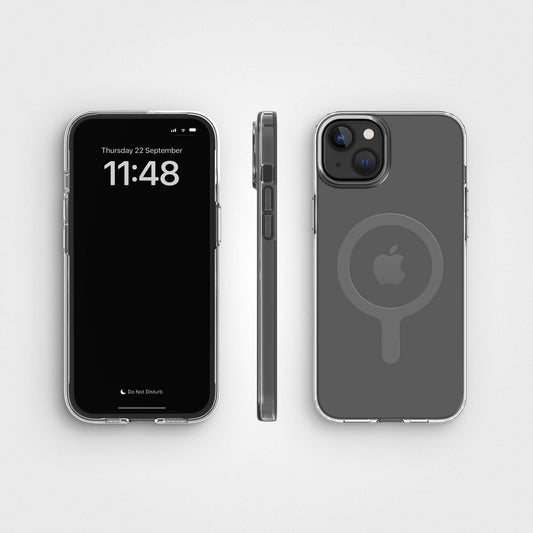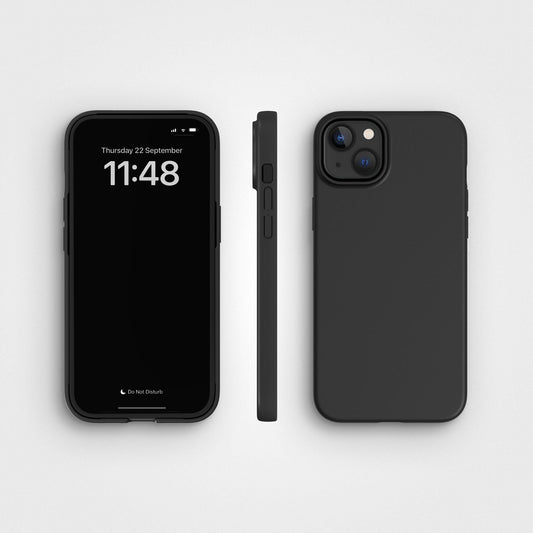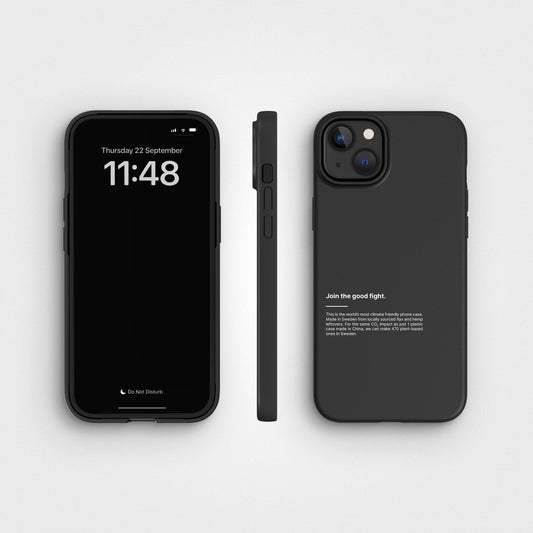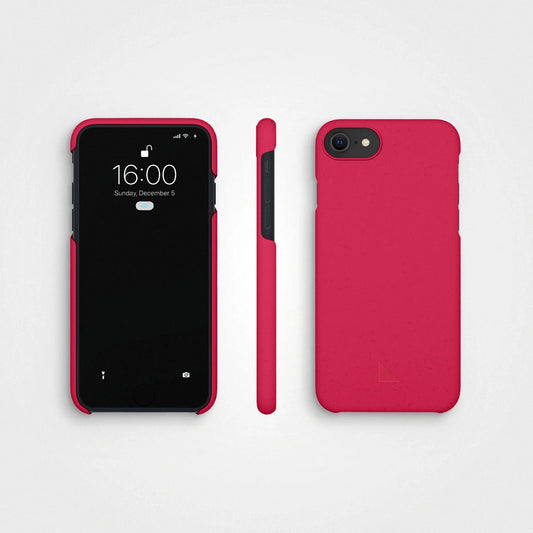Have you ever bought a product labeled as 'eco-friendly,' only to find out later that the claims were misleading or outright false?
If so, you've been a victim of greenwashing. But what about the other side of the coin? Have you ever considered that some companies might hide important environmental information about their products or services? This is known as green hushing.

Simply put, greenwashing, otherwise known as ‘green sheen’, is when an organisation knowingly or unknowingly leads people to believe that it’s doing more for the environment than it actually is. For a lot of businesses wanting to attract eco-conscious customers, it can be tempting to invest in marketing and PR tactics activities that portray their products or brand as sustainable, but without actually doing any of the hard work (and it is hard) that comes with backing up their claim.
The term greenwashing was first coined in the 1980s by Jay Westerveld, an American environmentalist who said the term came to him when considering a hotel resorts claims of helping to save coral reefs by reusing towels. However, as you can imagine, this is by no means the biggest greenwashing scandal ever to take place.
How do you know what eco-friendly means?

What is an example of greenwashing?
“Look into my eyes, look into my eyes, the eyes, the eyes, not around the eyes, don't look around my eyes, look into my eyes, you're under.” - Kenny Craig.
The above quote is from Matt Lucas’s hypnotist character, Kenny Craig, from the British sitcom Little Britain. The unscrupulous Kenny hypnotises people into doing things for him, such as handing over £50 notes in the street. In a way, this is analogous to greenwashing when performed by businesses and organisations who intentionally use greenwashing tactics, for example “ad bluster” or false claims, to lure customers with a false environmentally friendly impression.
One famous example of corporate greenwashing is the German car manufacturer Volkswagen's emissions scandal, otherwise known as Dieselgate. Volkswagen installed devices into their line of “clean diesel” cars that allowed them to cheat emissions tests and claim positive environmental performance, when in reality the opposite was true. The scandal was eventually uncovered and Volkswagen were forced to recall millions of cars at great financial and reputational cost.

Difference between greenwashing & green hushing
Both are forms of misleading the public, and they can have serious environmental consequences. In this blog post, we'll explore the history and types of greenwashing and green hushing, and provide tips on how to avoid falling for these tactics.
Greenwashing
It has been around for decades and has become more prevalent as consumers become more concerned about the environment and seek eco-friendly products. Companies may use vague or misleading language, or highlight small environmental benefits while ignoring larger negative effects, to make their products seem more environmentally friendly than they actually are.
Green Hushing
It involves hiding important environmental information, such as the use of harmful chemicals or unsustainable practices, from consumers. This can make it difficult for consumers to make informed decisions about the products they buy and the companies they support.
History of the terms:
Picture this: it's the 1980s, and environmentalism is becoming a hot topic. Suddenly, companies everywhere are scrambling to jump on the eco-friendly bandwagon. But rather than actually changing their products and practices, many companies are resorting to a more insidious tactic: greenwashing.
The term 'greenwashing' was coined in response to this trend of companies making vague or exaggerated environmental claims for the sake of marketing. It's like slapping a green label on a product and hoping that consumers will be fooled into thinking it's better for the environment than it really is.
Fast forward to the present day, and greenwashing has become a sophisticated and widespread problem. Companies are using many sneaky tactics to make their products seem more environmentally friendly than they really are. Some use vague or misleading language, while others plaster their packaging with eco-friendly symbols with no real certification.
So, while the tactics of greenwashing and green hushing may have developed over time, the underlying goal remains the same: " to deceive consumers and make products seem more eco-friendly than they really are." But with a little bit of knowledge and a healthy dose of skepticism, consumers can learn to spot these tactics and make informed choices that actually benefit the planet.
How to spot greenwashing or green hushing?
As a company committed to sustainability, we know our customers are interested in making environmentally responsible choices. But with so many products claiming to be eco-friendly, it's hard to know what to trust. That's why it's important to be aware of the different greenwashing and green hushing, so you can spot them and make informed decisions.
Here are a few common tactics to watch out for:
1. Vague or unsubstantiated claims: Beware of companies that make ambiguous or unverifiable environmental claims, such as using terms like "all-natural," "chemical-free," or "eco-friendly" without providing specific details or evidence.
2. Irrelevant endorsements or labeling: Just because a product features a green leaf logo or nature-inspired imagery on its packaging doesn't automatically make it environmentally friendly. Be cautious of endorsements from celebrities or influencers without real expertise in environmental issues.
3. Lack of transparency: Green hushing often takes the form of companies not providing enough information about their products. For example, companies might not disclose where their materials are sourced from or how their products are produced.
By being aware of these tactics and examples, you can spot greenwashing and green hushing in action. And as a conscious consumer, you can make choices that support companies that are truly committed to sustainability.
How to do the research and avoid greenwashing companies:
For evaluating a company's environmental claims, conducting your own research is key. Here are a few steps you can take to delve deeper and uncover the truth behind greenwashing, apart from that, we created a list of trustworthy online stores to help you choose, here you can take a look at our guide to the best eco-friendly online stores.
Look beyond marketing language: Dig deeper and ask for specific information about a product or service's manufacturing process, materials used, and environmental impact. Transparent companies should readily provide detailed information upon request.
Assess transparency and accountability: Companies that engage in greenwashing may hesitate or refuse to provide specific environmental information. Lack of transparency or evasive answers may be warning signs.
Seek third-party certifications: Look for reputable third-party certifications or independent reviews to validate a company's environmental claims. These certifications provide an objective assessment of a company's sustainability practices.
Check sustainability reports: Companies that are transparent about their sustainability efforts often publish annual or periodic sustainability reports. At agood company, we are dedicated to transparency and publish detailed reports outlining our environmental initiatives, progress, and challenges. By reading these reports, you can gain insights into our sustainability practices and verify their claims.
Research the materials used: A crucial aspect of evaluating a product's environmental impact is understanding the materials it is made from. agood company provides detailed information on the materials they use, such as responsibly sourced ingredients and eco-friendly packaging.

Assess the supply chain: Companies' commitment to sustainability extends beyond their own operations and includes their entire supply chain. agood company places a strong emphasis on responsible sourcing and fair trade practices.
Researching a company's supply chain can help uncover any potential issues, such as unethical labor practices or environmentally damaging processes, which may show greenwashing.
Fortunately, there is a trustworthy signal that can help you identify businesses that are truly committed to the planet's well-being: the highly regarded B Corp certification. By actively seeking out companies with B Corp certification, you can have peace of mind knowing that they have undergone a thorough evaluation to meet the most stringent sustainability criteria.

Not all companies are insidious greenwashers. There are good companies out there that are putting in the work and building sustainable business models. One of our favorites is BrewDog, a craft beer company from Scotland. Recently, BrewDog made a concerted commitment to become carbon neutral and use their influence to promote the environmental movement. As part of this, they also started along their journey to becoming a B Corp. Make sure to watch our #agoodcommunity interview with co-founder and CEO, James Watt, to learn more.
agood company:
Unlike many other companies, we at agood take greenwashing seriously and strive to be transparent in our sustainability efforts. We don't make vague or exaggerated claims about our products being eco-friendly; instead, we provide concrete evidence to back up our environmental claims.
For example, we publish detailed sustainability reports on our website, outlining our progress toward meeting sustainability goals. We believe in accountability and want our customers to know exactly what we're doing to minimize our impact on the environment. Additionally, we provide information on the environmental impact of each of our products, sharing details about the materials used and their carbon footprint.
But our commitment to transparency doesn't stop there. We actively work to combat greenwashing in the industry as a whole. We advocate for clearer and more consistent labeling standards, pushing for greater honesty and accuracy in environmental claims made by companies. We also make it a priority to educate consumers on how to identify misleading environmental claims, empowering them to make informed choices. We are trying our best to use terms that really reflect our work and provide our customers with detailed explanations of those terms. Here you can see the difference between upcycling and recycling.
By taking a proactive approach to greenwashing, we aim to set a positive example for other companies to follow. We believe that transparency and honesty should be the foundation of any sustainability effort. It's not just about the bottom line for us; it's about making a real difference for the planet and its future generations.
So, whether you choose agood or another company, we encourage you to look beyond greenwashing claims. Seek out companies that provide evidence, publish reports, and are committed to transparency. By highlighting our efforts to combat greenwashing and promote transparency, we hope to inspire responsible and trustworthy practices across the industry.
Remember, greenwashing can be a tricky issue to navigate, but with a bit of knowledge and some careful research, you can avoid falling prey to false environmental claims. Choose companies that walk the talk and prioritize sustainability like agood. Together, we can make a meaningful impact and create a greener future.
































